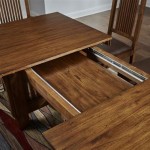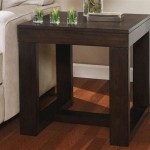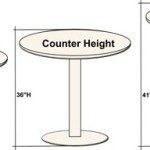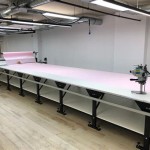Standard Size of a Table Tennis Table: A Comprehensive Guide
The game of table tennis, also known as ping-pong, enjoys significant global popularity as both a recreational pastime and a competitive sport. A critical element influencing the playability and standardization of the game is the table itself. Specifically, the dimensions, construction, and specifications of a table tennis table are meticulously defined by sporting governing bodies to ensure fair play and consistent gameplay across various levels of competition. This article will delve into the detailed regulations governing the standard size of a table tennis table, exploring its dimensions, material composition, and other relevant specifications.
Understanding the precise measurements and characteristics of a regulation table tennis table is essential for athletes, coaches, tournament organizers, and even casual players seeking to replicate an authentic playing experience. These standardized guidelines ensure that all players compete on a level playing field, free from undue advantages or disadvantages stemming from inconsistencies in equipment.
Regulation Dimensions of a Table Tennis Table
The International Table Tennis Federation (ITTF) sets the standard dimensions for all table tennis tables used in officially sanctioned competitions. These dimensions are rigorously enforced to maintain uniformity across all tournaments and matches.
The length of a regulation table tennis table is 2.74 meters (9 feet). This measurement represents the overall playing surface's longest dimension. This length is critical for determining the potential reach of players and the distance the ball must travel during rallies.
The width of a regulation table tennis table is 1.525 meters (5 feet). This measurement defines the table's breadth, impacting the angles players can achieve when executing shots and the overall playing area available during gameplay.
The height of the table top above the floor must be 76 centimeters (30 inches). This defined height ensures that players of varying stature can comfortably play the game and consistently execute shots. Variations in height, even by a small margin, could significantly alter the trajectory of the ball and affect gameplay.
These three dimensions - length, width, and height - are paramount in defining the playing area and ensuring a standardized playing experience. Any deviations from these specifications can impact the game’s fairness and predictability.
Material Composition and Surface Properties
Beyond the dimensional specifications, the ITTF also stipulates the required material composition and surface properties of the table tennis table to ensure consistency in ball bounce and overall playability.
The surface of the table must be uniform and provide a consistent bounce. Typically, table tennis tables are constructed from medium-density fiberboard (MDF) or similar composite materials. The surface is then coated with a special paint or finish that meets specific friction and color requirements.
The color of the table surface is specified as dark and matte, typically dark green or dark blue. This dark, non-reflective surface minimizes glare and eye strain, allowing players to focus on the ball more effectively. The matte finish further reduces glare and ensures a consistent ball bounce by minimizing surface irregularities.
The table surface must provide a uniform bounce of approximately 23 centimeters (9 inches) when a standard table tennis ball is dropped from a height of 30 centimeters (11.8 inches). This bounce test ensures that the table surface offers consistent rebound characteristics, contributing to fair and predictable gameplay. Significant deviations from this bounce height can indicate surface irregularities or inconsistencies in material composition.
The surface should be free of any defects that could interfere with the ball's trajectory or bounce. These defects could include scratches, dents, or uneven coatings. Regular maintenance and cleaning of the table surface are crucial to maintaining its integrity and ensuring consistent performance.
Net Specifications and Placement
In addition to the table's dimensions and surface properties, the net assembly and its placement are precisely defined by ITTF regulations. The net plays a crucial role in defining legal serves, limiting shot trajectories, and influencing the overall dynamics of the game.
The net assembly consists of the net itself, its suspension, and the supporting posts. The height of the net shall be 15.25 centimeters (6 inches) from the playing surface along its entire length. This uniform height is critical for defining the boundary between legal and illegal serves, as well as influencing the achievable angles for shots during rallies.
The net must extend to the sides of the table by 15.25 centimeters (6 inches) beyond the edges of the table. This extension ensures that the net effectively covers the entire width of the playing surface and prevents players from exploiting gaps or inconsistencies in the net’s coverage.
The net should be suspended by a cord attached to two posts, one on each side of the table. The posts must be positioned outside the sidelines of the table. Proper tension must be maintained on the cord to ensure the net maintains its correct height and position throughout the match. Sagging or loose nets can significantly affect gameplay and potentially lead to disputes.
The supporting posts should be of a dark color and should not reflect light, minimizing distractions for the players. The attachment system for the posts should be designed to securely hold the net in place without damaging the table surface.
The white sidelines, 2 cm wide, run along the 2.74 meter length of the table. The white end lines, also 2 cm wide, run along the 1.525 meter width. For doubles play, each half of the table is divided by a white centre line, 3 mm wide, which runs parallel with the sidelines. The centre line only has significance for doubles play relating to service.
The enforcement of these net specifications is critical for maintaining fair play and ensuring a consistent playing environment for all players. Tournament officials are responsible for verifying the net’s height, tension, and extension prior to each match.
Deviation from the prescribed dimensions or material specifications can significantly impact the game. For example, a table that is too short or narrow will limit the range of shots possible, while a table with an inconsistent bounce will make it difficult for players to control the ball. A net that is too high or too low will affect the legality of serves and the trajectory of shots. Therefore, adherence to the ITTF standards is crucial for ensuring a fair and competitive playing environment.
Moreover, the quality of the table tennis table also influences the overall playing experience. A well-constructed table will provide a consistent bounce, a smooth surface, and a stable playing platform. This allows players to focus on their technique and strategy without being distracted by inconsistencies in the equipment. A poorly constructed table, on the other hand, can lead to frustration and dissatisfaction, as players struggle to compensate for the table's imperfections.
The ITTF regularly reviews and updates its regulations to reflect advancements in table tennis technology and to address any emerging issues. These updates are communicated to national table tennis associations and are incorporated into the rules of competition. Players, coaches, and tournament organizers are responsible for staying informed about the latest regulations to ensure compliance and maintain the integrity of the sport.
In conclusion, the standard size of a table tennis table, along with its material composition and net specifications, are meticulously defined by sporting governing bodies to ensure fair play and consistent gameplay. These regulations are essential for maintaining the integrity of the sport and ensuring that all players compete on a level playing field. By adhering to these standards, players can focus on their technique and strategy, knowing that their equipment is meeting the highest standards of quality and performance.

Table Tennis Dlgsc

To Choose The Right Table Tennis Size For You Stiga Sports

Table Tennis Room Size Court And Dimensions

Table Tennis Measurements Size And Dimensions Cornilleau

Ping Pong Table Dimensions Ponghero
Table Tennis Tables Dimensions Drawings Com

Table Tennis Tables Which Is Right For Me Hart Sport New Zealand

Ping Pong Table Dimensions The Guy

Table Tennis Measurement Size In Feet Making

Understand The Table In Tennis On Opponent S Size There Is 4 5 Feet Depth And Wide That Mean You Have Higher Chance Of Winning To Attac








